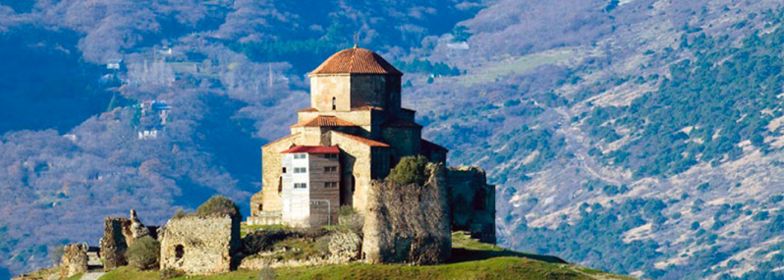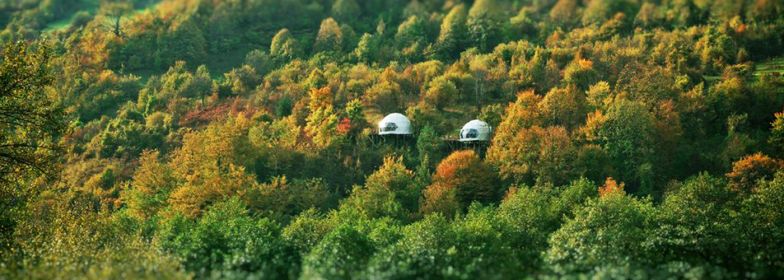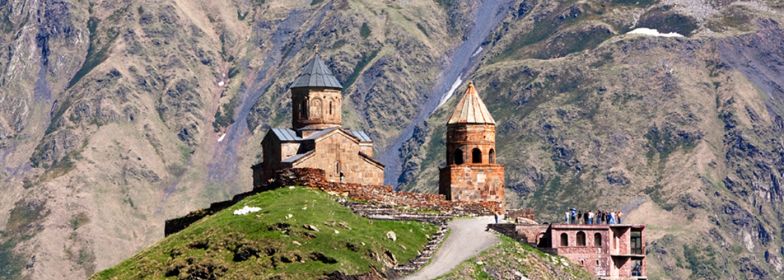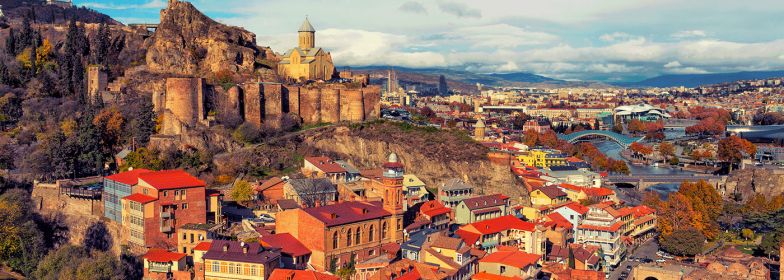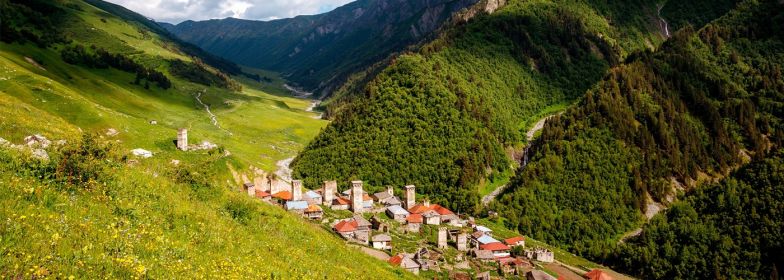Georgian cuisine is probably the most important attraction of the country. Since the traditional Georgian feast is an integral element of culture, Georgian entertainment should match its high level. Georgians have managed to make their cuisine not only magically delicious but also bright, original, exquisite, unique and unforgettable.
Refers to the cooking styles and dishes created by Georgian people. The Georgian cuisine is unique to the country, but also carries some influences from other Caucasian, Eastern European and nearby Middle Eastern culinary traditions. Each historical province of Georgia has its own distinct culinary tradition, with variations such as Megrelian, Kakhetian, and Imeretian cuisines. Rich with meat dishes, the Georgian cuisine also offers a variety of vegetarian dishes.
Khinkali
These delicious Georgian dumplings known as khinkali are considered to be one of the national dishes of the country. The dumplings are filled with meat and spices, then traditionally twisted into a knot at the top. Regional differences influence the fillings and every part of Georgia has their distinctive variety.
For example, in the mountainous regions, the most traditional filling is lamb, however; the most frequent variety throughout entire Georgia is a mixture of pork and beef. The vegetarian versions made with traditional Imeretian cheese or mushrooms are also quite popular. The traditional recipe was developed over time, and now includes fresh herbs such as cilantro or parsley.
The meat for khinkali is never precooked – therefore, all of the juices are tucked inside the dumplings. Eating khinkali is also a part of traditional Georgian folklore: the top, where the dough is twisted into a knot, should never be eaten because it serves as a handle to hold the dumpling, and it is usually left on the plate as an indication of how many dumplings have been eaten. These flavorful dumplings are served plain or paired with freshly ground black pepper.

Mtsvadi
Mtsvadi is a traditional Georgian dish consisting of a skewered shish kebab. Ground pork, mutton, or veal is typically marinated in a mixture of lemon juice, pomegranate juice, tarragon, salt, pepper, and chopped onions, so that it remains tender and juicy when grilled. Mtsvadi is often prepared outdoors over an open fire.
It is recommended to serve the dish with tkhemali plum sauce, raw onion rings, sliced tomatoes, and pomegranate seeds.

Adjarian khachapuri
Khachapuri, also spelled as Hachapuri-is a traditional Georgian dish of cheese-filled bread. One of the most popular khachapuri varieties, adjarian is an open-faced pie that is filled with a combination of cheese and eggs. The base is made from yeasted dough that is rolled into an oblong shape and traditionally comes filled with Sulguni or Imeretian cheese, or the combination of both. The dish is finished off with an egg that is placed on top, and the pie is then additionally baked until the egg is partially set.
This boat-shaped pie hails from the coastal Adjaria region, and it is usually served with a slice of butter on top.

Elarji
Elarji is a specialty of the Georgian Samegrelo region, prepared as a thick porridge consisting of coarse cornmeal, cornflour, and sulguni cheese. The dish has an extremely thick texture, and it is very elastic. It is traditionally served hot and consumed with Georgian bazhe sauce, made with garlic, walnuts, and various spices.


Kubdari
Kubdari is a popular Georgian bread that is traditionally filled with beef, pork, or a combination of the two, along with spices such as cumin, dill, coriander, blue fenugreek, red pepper, onions, garlic, and salt. The dough consists of flour, water, yeast, sugar, salt, and eggs. Interestingly, the meat used in this savory pie should be cut, not minced.
It is recommended to glaze kubdari with butter and serve it hot.

Kupati
Kupati is a spicy Georgian sausage made with pork or beef, onions, and flavorings such as black pepper, cinnamon, garlic, salt, and coriander. It is especially popular in the Caucasus region. The sausage is most commonly grilled or fried before serving, when it is traditionally accompanied by sauerkraut or sliced onions, and garnished with freshly chopped coriander and pomegranate seeds.
















